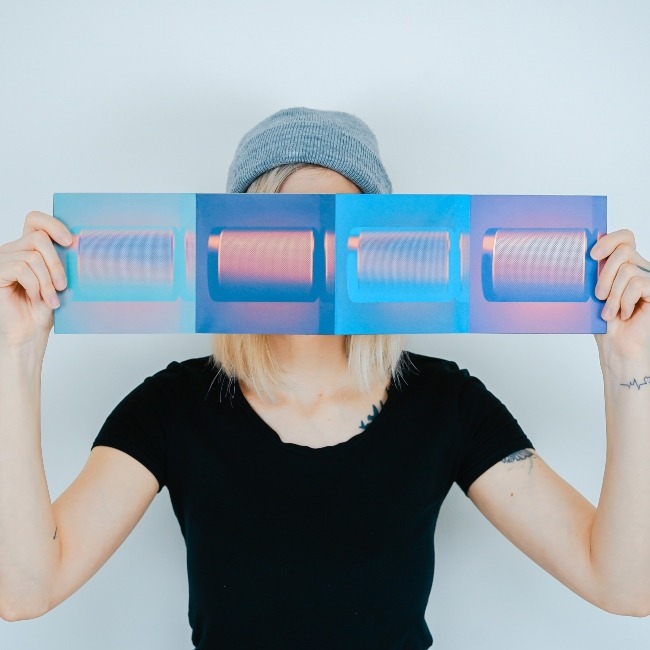When James Dyson finally launched what soon became the most popular vacuum cleaner on the market, he had already thrown away thousands of prototypes. Eventually, his cyclone technology outperformed traditional vacuum cleaners – increasing suction and eliminating the quickly clogging bags. There was no revolutionary breakthrough, only evolutionary progress – as David Morey concluded in “Innovating Innovation.”
“Initiate a failure by doing something that’s very silly, unthinkable, naughty, dangerous[…] I made 5,127 prototypes of my vacuum before I got it right. There were 5,126 failures. But I learned from each one. That’s how I came up with a solution. So I don’t mind failure,” said Sir James Dyson in a 2007 interview.
Prototypes are often failures, but Dyson doesn’t have a problem with that. Because every prototype helps you find solutions and build great products incredibly fast. During prototyping, solving one problem often raises other questions that need to be answered and create opportunities for innovation.
Tom Chi’s approach to learning
Dyson is not the only one who appreciates the power of prototypes. Tom Chi – the co-founder of Google[x], who is also an advisor to QUALITANCE, emphasizes how much you can learn from this methodology. In one of his TED-Ed lessons focused on rapid prototyping Google Glass, Chi underlined that by applying this approach to any creative process you gain a particular kind of learning called expanded learning.
Unlike book learning – the kind you get in school and builds on what humanity already knows, expansive learning enables you to create something new by letting you expand into the possibilities and contribute to the human knowledge along the way.
Even when held together by paperclips and tape, rapid prototypes can validate concepts and accelerate development. For instance, the prototype of the Google Glass headset only took 1 day, whereas the prototypes of the projections for the device were ready in 45 minutes.
If you don’t have the time to watch Tom Chi tell the story of prototyping Google Glass, let me walk you through his method outlined into the following rules:
#1 Find the quickest path to the experience
Thinking about a particular experience doesn’t get you very far in the process of building it right. Because you’re only working with assumptions and probabilities.
In order to challenge these assumptions, you can mimic and test your new experience with potential users. From their reactions, you will learn if it’s easy for them to enjoy it, whether it requires a change in their behavior, if it makes them feel awkward, etc. Observe how people interact with your experience, take notes, and tweak it accordingly.
#2 Doing is the best kind of thinking
A new experience can be the subject of intense debates – even if it’s just an idea. Still, no matter how much you conceptualize it, nothing will fuel your creation process like real action.
Instead of forever debating on the experience, start building a very simple prototype. By building and exposing it to potential users, you will gain significantly more profound insights. Because action leads to insight more often than insight leads to action. Insight without action is just theoretical knowledge which can only be right until reality proves it wrong.
#3 Use simple materials
Basic materials like paper, clay, tape, or wire can move experiences at the speed of thought and maximize your rate of learning. They help you advance an idea and learn from it very quickly.
When Chi’s team built the Google Glass prototypes, they did not use any sophisticated equipment or expensive materials. The headpiece was made out of paper, modeling wire, and clay that had the same weight as the electronic pieces that would be used in the final product. In just one day, this small investment helped them understand how to evenly distribute the weight of the headpiece between the nose and the ears.
Want to learn how we use rapid prototyping to accelerate user discovery and product development? Check out this story on how we helped IKEA create the next-gen shopping mall experience for their customers.



The incredible story of Skunk Works or how to create high speed projects - QUALITANCE
Posted at 18:50h, 05 November[…] that the team can easily collaborate and iterate. They need to do prototypes, get feedback from the customer, reflect on it, adjust work and keep going. For this to happen, you […]
Total Experience (TX). Just a mindset or a future business model? - QUALITANCE
Posted at 17:09h, 27 May[…] want to achieve with the help of the new product. These user insights allow us to start building prototypes and then fully develop products without the fear that the market is not ready for them or that the […]
[Team Spotlight] I'm BOGDAN and this is why I love design - QUALITANCE
Posted at 19:12h, 13 July[…] functional UI that solves a user’s problem (not just beautiful for the sake of it), high fidelity prototyping (as high as it can be) and user testing. Basically, you need to take on some of the […]